Le Rêve de d’Alembert (sold)
1974
Synthetic polymer paint on canvas
11 feet 7 ½ inches x 23 feet 6 ¾ inches (140 ½ x 281 ¾ inches)
Provenance:
The Artist
Knoedler & Company (acquired 1995)
Private collection until 2014
Exhibited:
Frank Stella, 1970-1987, The Museum of Modern Art, New York, October 10, 1987-January 5th, 1988. Traveled to Stedelijk Musejm, Amsterdam, The Netherlands, February 7th-April 15th, 1988; Musee National d’Art Moderne, Center George Pompidou, Paris, France, May 16th – August 1988; Walker Art Center, Minneapolis, Minnesota, October 15th, 1988 – January 1st, 1989, Contemporary Arts Museum, Houston, Texas, February 10th – April 23rd, 1988; Los Angeles County Museum, California, June 1st – August 13th, 1989. Catalogue with text by William Rubin. Illustrated in color page 49. 3 Classics: Motherwell, Frankenthaler, Stella, Knoedler & Company, New York, September 9th -30th, 2004. Exhibition checklist #2. Reproduced in color on the announcement card.
Literature:
E.A. Carmean, Jr., “Stella’s Places: Frank Stella Enters a Sixth Decade of Expanding the Range of Abstract Art,” Art & Antiques (February 2008) pages 42-46. Mention in the text page 46.
Contemporary Great Masters 18: Frank Stella (Tokyo: Kodansha Ltd., 1993) Illustrated in color, page 35; listed page 112.
Notes:
Frank Stella’s mammoth Le Rêve de D’Alembert, Measuring nearly twelve by twenty-four feet, represents the grand statement of the artist’s classic Concentric Squares compositions.
Prior to the 1990’s, Frank Stella’s art could be broadly described as moving sequentially from one formal series to another; for example, going from the Black paintings to the Aluminum series to the Copper works. Within each discrete series, Stella would explore the possibilities of its format, and occasionally create a large and (perhaps) summary painting such as Union Pacific, 1960 (6 feet 5 inches x 12 feet 4 inches) from the Aluminum series, onw at the Des Moines Art Center, or Takhti-i-Sulayman I, 1967 (10 feet x 20 feet), the enormous interlace composition in the Protractor series, in the Menil Collection in Houston. 1
Le Rêve belongs to this same serial form of creative invention, and indeed, Le Rêve also represents the fullest realization of the Concentric Squares compositions. At the same time, however, the Concentric Squares series is distinct from Stella’s other series where the works were created within a specific period in the artist’s unfolding oeuvre the Concentric Squares body of work (actually, relatively few in number2) which stand apart from and yet, co-exist with two decades of Stella’s inventions.
Within this series, from its exceptional scale and its double square diptych composition, Le Rêve de d’Alembert, 1974 stands as the most important painting in numerous other aspects as well, including critical opinions, realizing what Stella described as “pretty high, pretty tough pictorial standard.”3
While Stella’s Concentric Squares series is conventionally dated to 1962, and a set of five large paintings (7 feet x 7 feet) in a spectrum of colors (and one in grays), the concept of a single color concentric bands composition first appeared in 1959, in two Black paintings, one with a horizontal orientation, the other as a near-square, turned (45 degrees) to form a lozenge, followed by a set of concentric squares in one color in the Benjamin Moore Series of 1961, in various sizes (most small, i.e. 12 inch squares; one larger work in green with the title of Island No. 10 ). All of these paintings, as with the Concentric Squares of 1962-1963, are single image compositions.
Diderot
Le Rêve is one of a small series of monumental Concentric Squares Stella made in 19174, in the midst of his ongoing Polish Village series, with only one other double-square picture made, the Paradoze Sur Le Comédien (collection, the artist). The series is collectively known as the Diderot Series, with each work bearing the name of a work by the 18th Century French critic and philosopher. Here, except for the two double squares, all works ar single format pictures, and as with the smaller 1962-1963 works, with one painting in only gray tones. French Enlightenment philosopher and mathematician, Jean Le Rond d’Alembert (1717-1783), for whom “d’Alembert’s Dream” is named was a close colleague of Denis Diderot, and also his collaborator in the creation of the great Encyclopédie.
Sacramento
Four years later, Stella returned to the Concentric Squares in seven additional paintings, with on double composition, the modest –sized (69 inches x 138 inches) Double Scramble; the other six are single squares, all less than nine-feet square.
Exhibitions, Literature
It is telling of the authority and rightness” of the twenty-four bands, double square composition realized in Le Rêve that even in color reproduction Le Rêve seems to be a familiar work; yet, except being shown in the exhibition Frank Stella 1970-1987, in 198, and its reproduction in color in the show’s catalogue 4, the grand Le Rêve had not been publicly shown for seventeen years, until its re-introduction in the exhibition 3 Classics: Motherwell, Frankenthaler, Stella at Knoedler and Company, in September 2004.
After holding the painting for more than a decade, Stella explained to William Rubin, the Concentric Squares provided a “standard” or benchmark for his work:
It’s just a powerful pictorial image… It has a strength that’s almost indestructible at least for me [its systematic approach] the effect of doing it “by the numbers,” so to say gave me a kind of guide in my work as a whole. Everything else… had to be at least as good – and that would be no mean achievement. The concentric Squares created a pretty high, pretty tough pictorial standard. [They] became a sort of “control” against which my increasing tendency in the seventies to be extravagant could be measured.5
Summary
Across Stella’s rich career, few works match Le Rêve in its monumental format, critical importance, as well as its role as a benchmark for Stella’s own work.
1. Union Pacific was acquired in 1976 by Des Moines’ then director James Demetrion, whose connoisseurship is still under-recognized. The Menil Takht-i-Sulayman I large protractor composition creates a triptych layout. The two outer half-circles in theory could fold in and over the center circle. This large painting was featured in the exhibition Frank Stella at the Museum of Modern Art in 1970. Of note, in the accompanying catalogue (by William Rubin, Working with Stella), the Menil protractor is the only painting given a double-page, fold-out color reproduction.
2. To be sure and unlike his other series, before the Polish Village series (1971), Stella made numerous very small versions of the square and double-square Benjamin Moore and mitered Mazes series paintings. Interestingly, many of these pictures were/are in the collection of Stella’s art world colleagues, including Jasper Johns (two works), Architect Richard Meier, critic Henry Geldzahler (two), Andy Warhol (eight_, and the sculpture Henry Moore.
3. Stella, on the concentric Squares, quoted in William S. Rubin, Frank Stella 1970-1987 (New York, Museum of Modern Art, 1987). Stella’s comments sited here come from this same source.
4. Le Rêve de d’Alembert is also reproduced in the far-less known Contemporary Great Masters: Frank Stella (Tokyo, Kodanhsa, 1993) plate 35.
4. In the broad context, Le Rêve de d’Alembert holds a unique place in Stella’s oeuvre, from both its distinct history of remaining (for thirty years) in the artist’s holdings to be held as a standard for his on going new work and in its selection (by Stella and Rubin) for the 1987 Museum of Modern Art Exhibition.

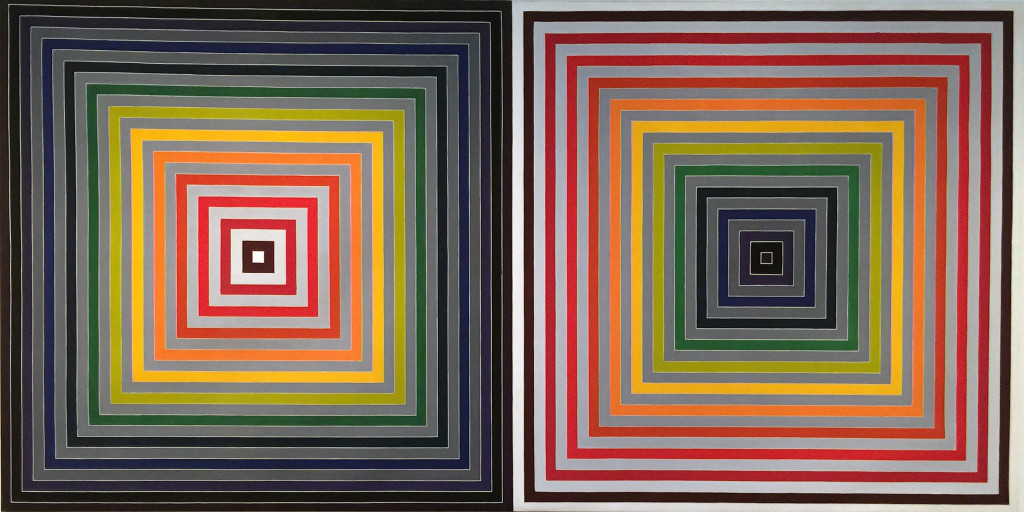
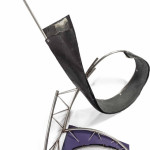 Bagoes
Bagoes
 Shards IV
Shards IV
 The Mat-Maker (D-13), 1990
The Mat-Maker (D-13), 1990
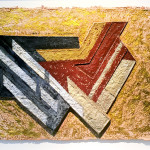 Bogoria (sold)
Bogoria (sold)
 The Honor and Glory of Whaling (Maquette) (sold)
The Honor and Glory of Whaling (Maquette) (sold)
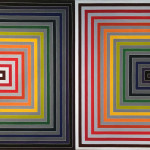 Le Rêve de d’Alembert (sold)
Le Rêve de d’Alembert (sold)
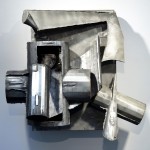 Il Dimezzato #7, D-1X (sold)
Il Dimezzato #7, D-1X (sold)
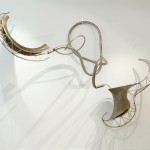 Tapekan (sold)
Tapekan (sold)
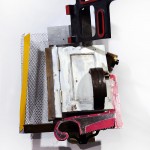 Playskool Door
Playskool Door
 Green Solitaire (sold)
Green Solitaire (sold)
 Djoli (sold)
Djoli (sold)
 Bonin Night Heron
Bonin Night Heron
 Untitled
Untitled
 Striped Hearts
Striped Hearts
 Untitled (number 11)
Untitled (number 11)
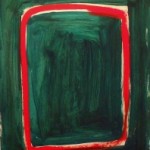 Untitled (number 10)
Untitled (number 10)
 Untitled (number 9)
Untitled (number 9)
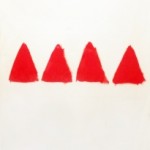 Untitled (number 8)
Untitled (number 8)
 Untitled (number 6)
Untitled (number 6)
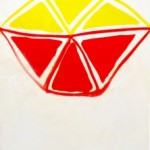 Untitled (number 5)
Untitled (number 5)
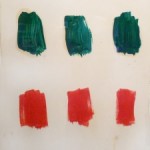 Untitled (number 3)
Untitled (number 3)
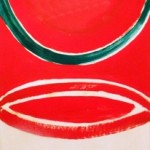 Untitled (number 7)
Untitled (number 7)
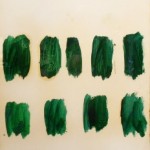 Untitled (number 4)
Untitled (number 4)
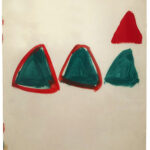 Untitled (number 2)
Untitled (number 2)
 Untitled (number 1)
Untitled (number 1)
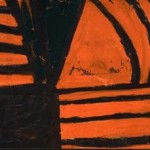 Untitled (Black and Orange)
Untitled (Black and Orange)
 Untitled
Untitled
 Untitled (Black)
Untitled (Black)
 Untitled (2.2.58)
Untitled (2.2.58)
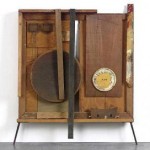 Cricket/Kit Construction
Cricket/Kit Construction
 Untitled (Green, Brown, and White)
Untitled (Green, Brown, and White)
 Untitled (Red and Black)
Untitled (Red and Black)
 Untitled
Untitled
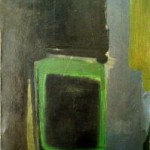 Untitled (Black, Green, and Grey)
Untitled (Black, Green, and Grey)
 Untitled (Black, White, and Red)
Untitled (Black, White, and Red)
 Untitled (Pink and Black)
Untitled (Pink and Black)
 Untitled (Green)
Untitled (Green)